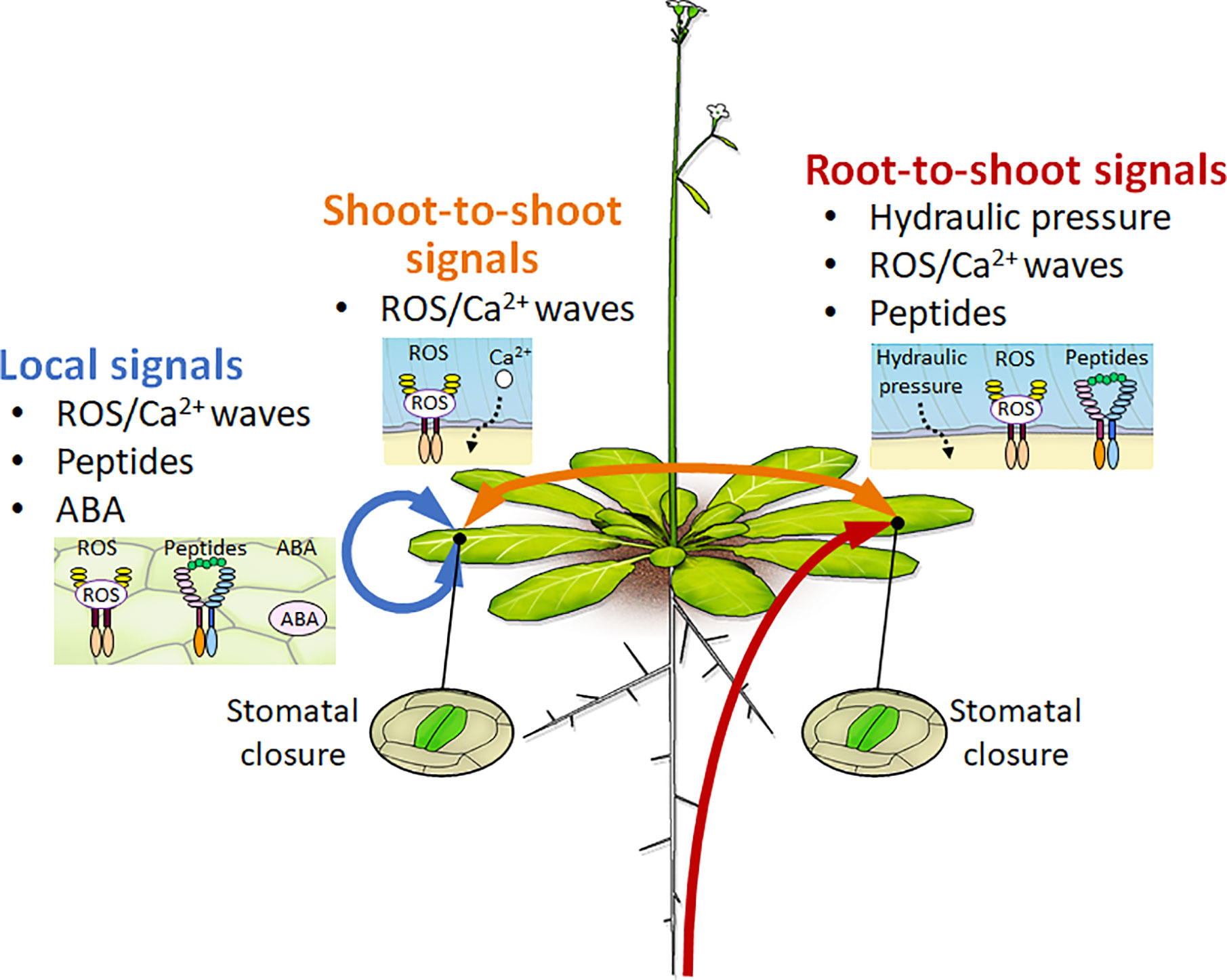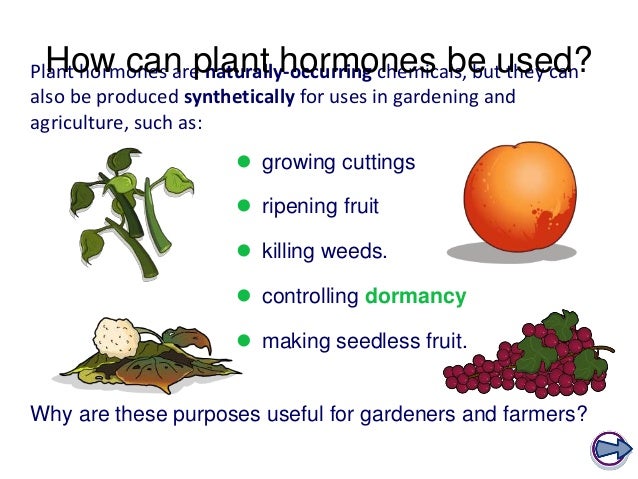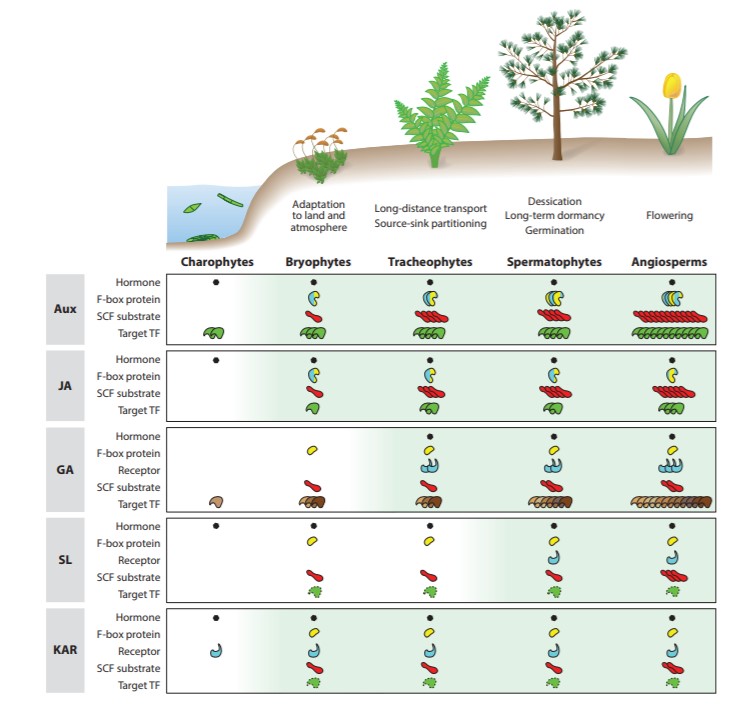Plant Hormones Presentation
| Introduction to Plant Hormones | ||
|---|---|---|
| Plant hormones, also known as phytohormones, are chemical messengers that regulate various physiological processes in plants. They play a crucial role in plant growth, development, and responses to environmental stimuli. Plant hormones are produced in specific parts of the plant and are transported to target sites to elicit specific responses. | ||
| 1 | ||
| Types of Plant Hormones | ||
|---|---|---|
| Auxins: These hormones promote cell elongation, root development, and apical dominance. Gibberellins: Gibberellins stimulate stem elongation, seed germination, and fruit development. Cytokinins: Cytokinins promote cell division, delay aging, and regulate nutrient distribution within the plant. | ||
| 2 | ||
| Types of Plant Hormones (contd.) | ||
|---|---|---|
| Abscisic Acid (ABA): ABA regulates seed dormancy, stomatal closure during water stress, and inhibits growth. Ethylene: Ethylene is involved in fruit ripening, leaf and flower senescence, and response to mechanical stress. Brassinosteroids: These hormones promote cell elongation, vascular tissue differentiation, and enhance stress tolerance. | ||
| 3 | ||
| Plant Hormone Interactions | ||
|---|---|---|
| Hormone Interactions: Plant hormones often interact with each other to regulate plant growth and development. Synergistic Effects: Some hormones may have synergistic effects, where their combined action is greater than the sum of their individual effects. Antagonistic Effects: Conversely, hormones can also have antagonistic effects, where one hormone inhibits the action of another. | ||
| 4 | ||
| Regulation of Plant Hormones | ||
|---|---|---|
| Biosynthesis: Plant hormones are synthesized in specific plant tissues and organs, often in response to environmental cues. Transport: Hormones are transported in plants through vascular tissues, such as xylem and phloem, to reach target sites. Signal Transduction: Hormones bind to specific receptors on target cells, triggering a cascade of signaling events that lead to specific responses. | ||
| 5 | ||
| Plant Hormones and Growth | ||
|---|---|---|
| Cell Division and Elongation: Auxins and cytokinins are key regulators of cell division and elongation. Tropisms: Auxins play a crucial role in gravitropism, phototropism, and thigmotropism, guiding plant growth towards or away from stimuli. Apical Dominance: Auxins inhibit lateral bud growth, promoting the growth of the main stem. | ||
| 6 | ||
| Plant Hormones and Development | ||
|---|---|---|
| Flowering: Gibberellins and other hormones play a role in flowering time regulation and floral organ development. Seed Germination: Gibberellins break seed dormancy and promote germination. Fruit Ripening: Ethylene is a key hormone in the ripening process, triggering changes in color, texture, and flavor. | ||
| 7 | ||
| Plant Hormones and Stress Responses | ||
|---|---|---|
| Drought Stress: Abscisic acid regulates stomatal closure, reducing water loss during periods of drought. Pathogen Defense: Salicylic acid and jasmonic acid are involved in plant defense responses against pathogens. Wound Healing: Ethylene is produced in response to physical damage, triggering wound healing and defense mechanisms. | ||
| 8 | ||
| Applications of Plant Hormones | ||
|---|---|---|
| Agriculture: Plant hormones are used in agriculture to regulate plant growth, increase crop yield, and improve fruit development. Tissue Culture: Hormones are essential in tissue culture techniques for plant propagation and regeneration. Hormonal Sprays: Synthetic plant hormones are used as sprays to control plant growth, promote flowering, and delay senescence. | ||
| 9 | ||
| Conclusion | ||
|---|---|---|
| Plant hormones are vital for the proper growth, development, and responses of plants to their environment. Understanding the intricate interactions and functions of these hormones can lead to advancements in agriculture and plant biotechnology. Continued research on plant hormones will unveil new insights into plant physiology and open doors for innovative applications in various fields. | ||
| 10 | ||






